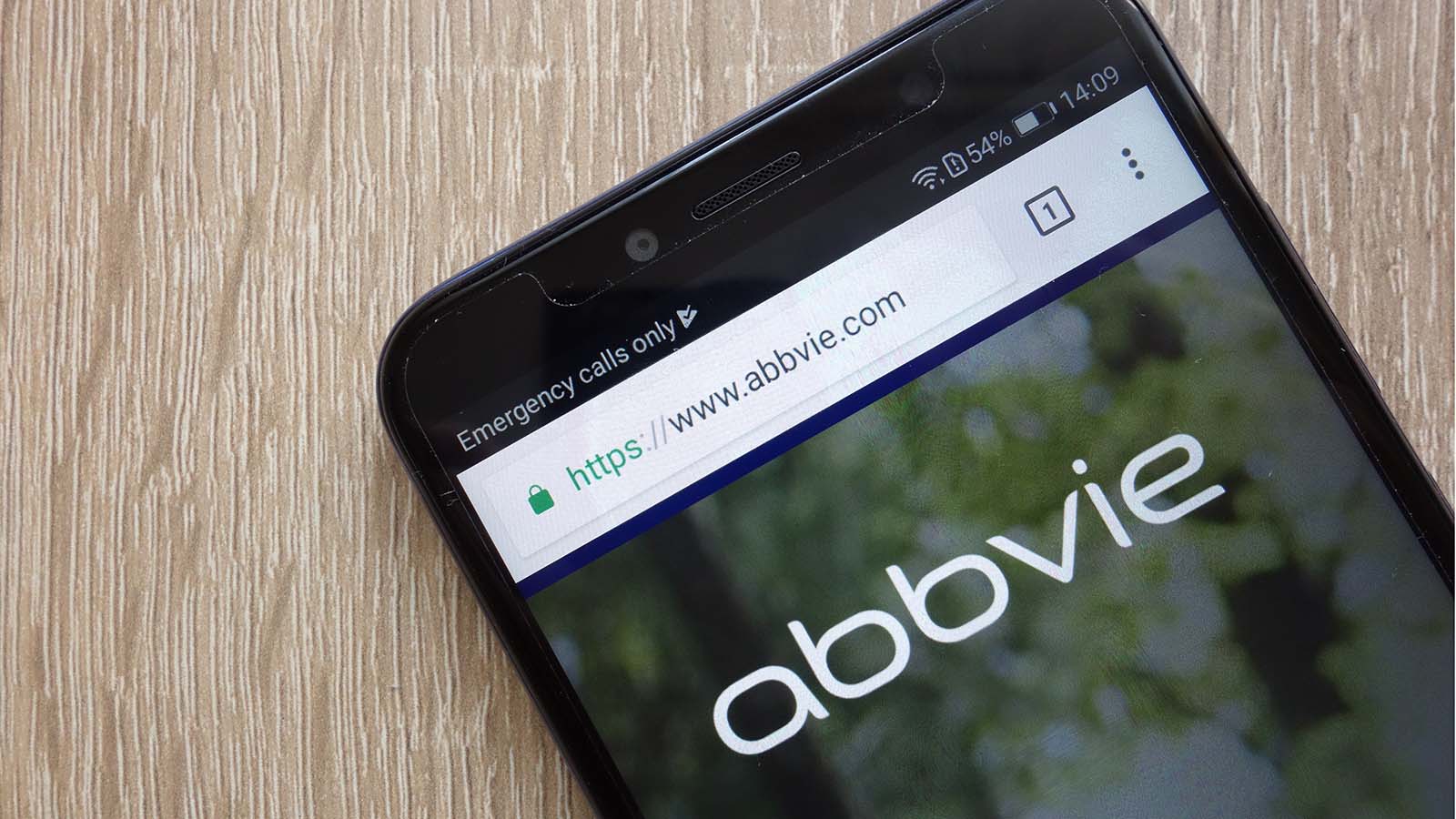AbbVie (NASDAQ:ABBV) is in the midst of a transition. AbbVie began life about a decade ago when it was spun off from health care and medical devices company Abbott (NYSE:ABT). Now, however, AbbVie must adapt quickly or ABBV stock will be in big trouble.
Up until recently, AbbVie relied on its blockbuster Humira drug for around 60% of its revenue. However, it could lose most of those sales over the next few years, as Humira’s patent protection will disappear in 2023. With that coming headwind in mind, AbbVie has done some M&A deals to diversify its revenues.
One such deal was buying Allergan. AbbVie spent more than $60 billion on Allergan to try to fill its upcoming Humira revenue hole. Even so, the new, enlarged AbbVie still relies on Humira for around 40% of its overall revenues. With a great deal of that revenue set to disappear in 2023, why have investors been bidding up ABBV stock recently?
AbbVie’s Dividend Is Its Main Attraction
AbbVie has attracted a ton of attention from investors primarily because it pays a huge dividend. Many healthcare companies tend to have a dividend yield of 2%-3%. I suspect that if AbbVie paid a similarly modest yield, its stock would be much less popular with individual investors.
But because of AbbVie’s huge yield, investors have flocked to the stock. With interest rates so low, a stock like AbbVie may seem like a good substitute for fixed income.
Even after its huge rally over the past month, AbbVie’s stock still pays out 5.2%. And in a recessionary economy, pharma may seem like a safe haven.
AbbVie’s High Yield Reflects Its Inherent Risk
Sometimes a company offers a high dividend simply because the market is underestimating its prospects. In many cases, however, a company’s dividend yield is elevated because analysts think there’s a strong risk that its profits (and thus its dividends) will decline in the future.
And that’s very much the case with AbbVie. It’s far from certain that AbbVie will be able to keep anything close to its current level of profitability once its Humira patents expire.
While there are always exceptions, in general, drug companies shouldn’t pay a high dividend; yields of 5% and up are dangerous. That’s because drug makers have to reinvest so much of their profits in research and development. After all, new drugs must be found to replace the ones that stop producing revenues.
When drug companies’ dividend yields are high, it’s often because their main products are about to no longer be covered by patents.
Most experienced investors see that risk and run for the hills. Meanwhile, yield-seeking investors are attracted to the cash flow of blockbuster drugs. But what is going to happen once the companies’ revenues start trending down?
A good example is Gilead (NASDAQ:GILD). In the past, the owners of its shares fixated on its past results rather than thinking about its future. From June 2015 to March 2017, its shares nearly got cut in half, and the stock traded at a price-earnings ratio of ten or less the whole way down.
AbbVie’s Numbers Don’t Look Great
Humira has been a key asset for AbbVie since it spun off from Abbott. Humira’s annual sales grew from an already tremendous $8 billion in 2011 all the way to $20 billion in 2018.
But the drug’s sales have started to fall now, as generic versions of it have been launched in some countries outside the U.S. Its sales fell to $19 billion in 2019, giving the slightest taste of what things will look like after 2023 when Humira will be totally off-patent and its revenues will subsequently collapse.
For comparison’s sake, AbbVie’s entire business generated $34 billion of revenue last year, and produced $8.4 billion of net income. Slice off most of Humira’s sales and the company’s results will drop massively.
Sure, Allergan will help to some extent. But AbbVie paid a steep price for Allergan and now has a whopping $63 billion of long-term debt.
AbbVie paid out $6.5 billion of dividends last year. Once its nearly $20 billion of annual Humira revenues start to disappear, it may pare back its massive dividend .
The Verdict on ABBV Stock
AbbVie simply can’t be judged based on its 2019 earnings and dividend. The real question is what its results will look like in 2023 and 2024 as its revenue starts to plunge during the beginning of the post-Humira era.
I’ve seen little evidence indicating that it will be able to replace its current profits after the patent cliff arrives. The Allergan deal looks like a risky and potentially even desperate measure. For a company with debt and declining revenues, an easy fix is reducing the dividend.
Particularly in the post-coronavirus world, when companies are slashing their dividends left and right, AbbVie can easily justify a similar move. Thus, dividend investors should steer clear of AbbVie stock for the time being.
Ian Bezek has written more than 1,000 articles for InvestorPlace.com and Seeking Alpha. He also worked as a Junior Analyst for Kerrisdale Capital, a $300 million New York City-based hedge fund. You can reach him on Twitter at @irbezek. At the time of this writing, he owned Gilead stock.
